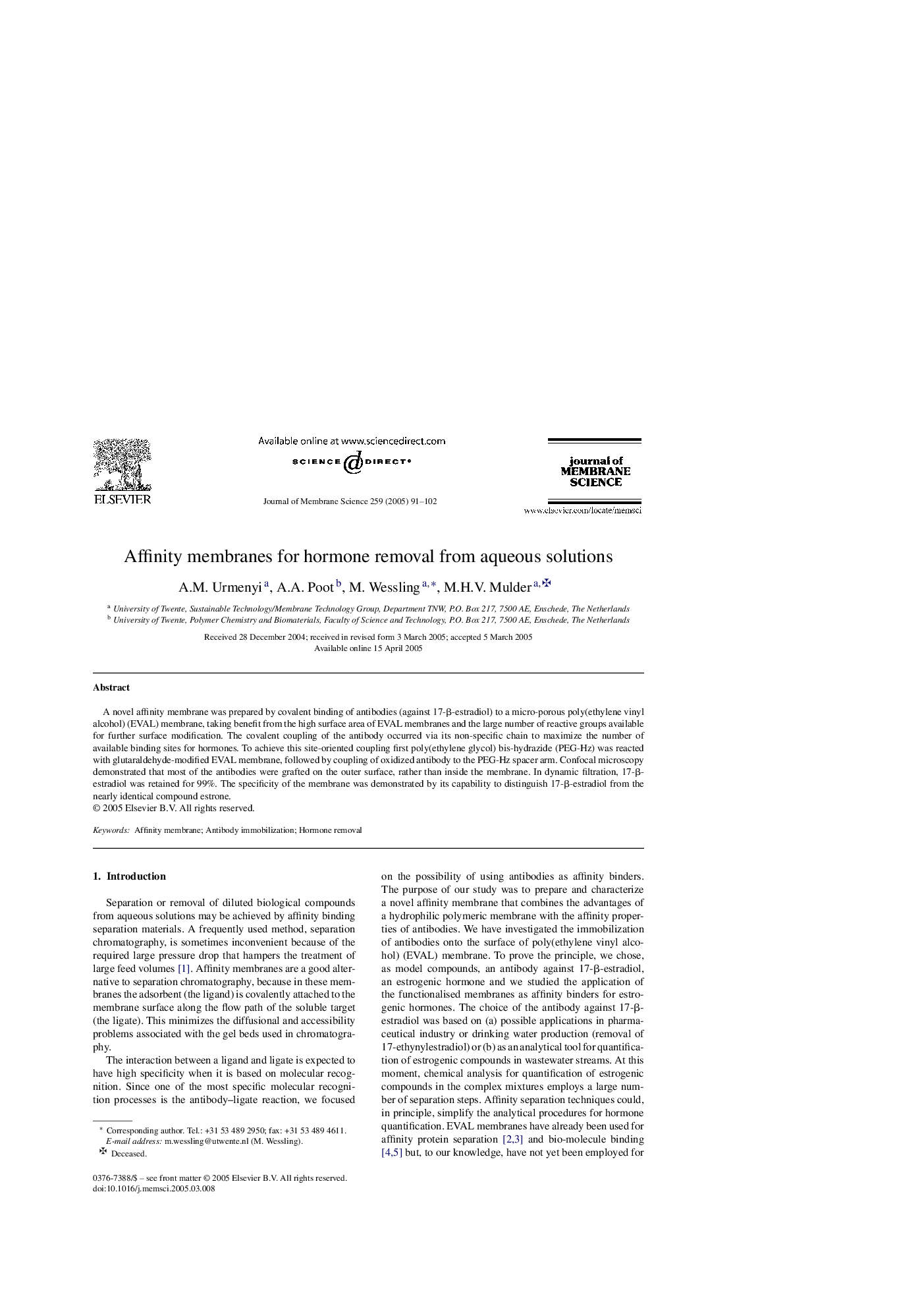| Article ID | Journal | Published Year | Pages | File Type |
|---|---|---|---|---|
| 9684740 | Journal of Membrane Science | 2005 | 12 Pages |
Abstract
A novel affinity membrane was prepared by covalent binding of antibodies (against 17-β-estradiol) to a micro-porous poly(ethylene vinyl alcohol) (EVAL) membrane, taking benefit from the high surface area of EVAL membranes and the large number of reactive groups available for further surface modification. The covalent coupling of the antibody occurred via its non-specific chain to maximize the number of available binding sites for hormones. To achieve this site-oriented coupling first poly(ethylene glycol) bis-hydrazide (PEG-Hz) was reacted with glutaraldehyde-modified EVAL membrane, followed by coupling of oxidized antibody to the PEG-Hz spacer arm. Confocal microscopy demonstrated that most of the antibodies were grafted on the outer surface, rather than inside the membrane. In dynamic filtration, 17-β-estradiol was retained for 99%. The specificity of the membrane was demonstrated by its capability to distinguish 17-β-estradiol from the nearly identical compound estrone.
Related Topics
Physical Sciences and Engineering
Chemical Engineering
Filtration and Separation
Authors
A.M. Urmenyi, A.A. Poot, M. Wessling, M.H.V. Mulder,
